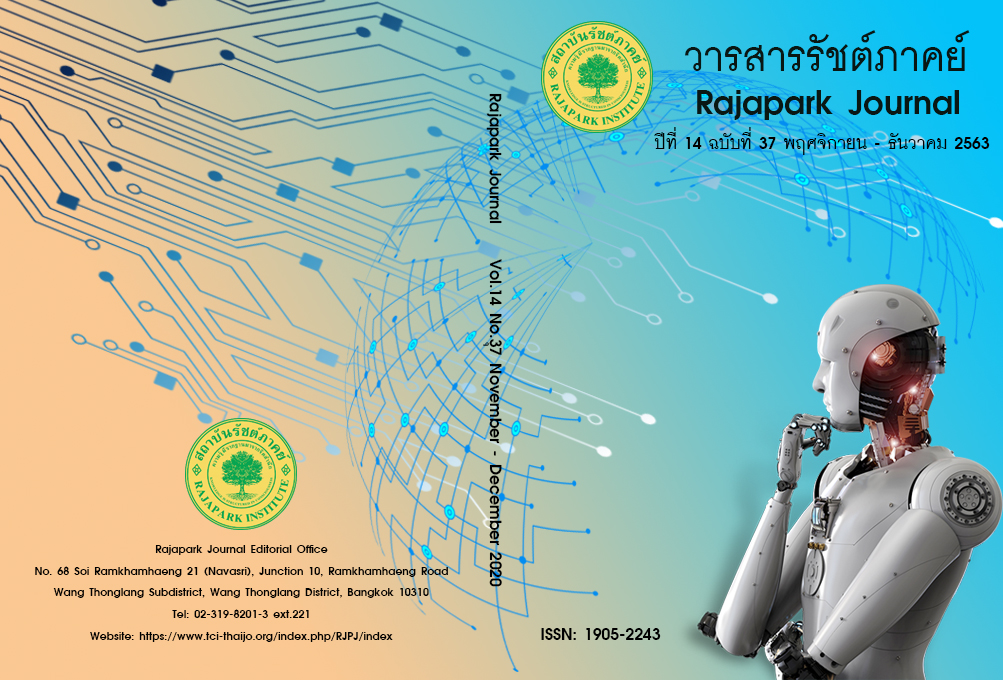Recognition of the Leader of The Thai Government in the Eyes of the People of The Lao People's Democratic Republic Between Lt. Col. Thaksin Shinawatra and General Prayut Chan-ocha
Main Article Content
Abstract
Recognition of the leader of the Thai government in the eyes of the people of the Lao People's Democratic Republic between Lt. Col. Thaksin Shinawatra and General Prayut Chan-ocha was objective of this research to study the history and relationship of the context. Recognition of Thai government leaders in the eyes of the people Lao People's Democratic Republic between Lt.Col. Thaksin Shinawatra and General Prayut Chan-ocha in terms of awareness, attitude and management efficiency (Economic, social, and political), which uses integrated research methods quantitative and qualitative questionnaires including interview forms are tools. That has been inspected by a specialist and meets the specified criteria analysis and presentation using percentage, mean, and presented in descriptive ways. The results showed that the people of Laos can be considered a country that has a relatively close relationship with Thailand than other countries. As being the elder brother's house the perception of Thai leaders in the Lao people's eyes on the attitude, when comparing, found that the reliability of Thaksin Shinawatra was at a high level with a high score of 4.03 percent, with scores higher than many dimensions have a score higher than 7 exceptions for military cooperation and good image the good history was scored by General Prayut Chan-ocha.
Article Details
Views and opinions appearing in the Journal it is the responsibility of the author of the article, and does not constitute the view and responsibility of the editorial team.
References
Best, J. W. (1977). Research in Education (3rd ed.). Englewood Cliffs, New Jersey: Prentice Hall, Inc.
Chuamwarasart, K. (2016). Roles and leadership of gen Prayuth Chan-ocha presented on the first page of daily newspapers. Master of Science (Mass Communication Administration). Thammasat University.
Granberg, D., & Brent, E. (1980). Perceptions of issue positions of presidential candidates. American Scientist, 68, 617-625.
Kutranon, S. (1983). Laos and the security of Thailand: A Study of Thai policy towards Laos, 1975-1990. Master of Political Science, Department of International Relations. Chulalongkorn University.
Markus, G. (1982). Political attitudes during an election year: a report on the 1980 NES panel study. American Political Science Review, 76, 538-560.
Markus, G., & Converse, P. (1979). A dynamic simultaneous equation model of electoral choice. American Political Science Review, 73, 1055-1070.
Nationweekend, Editorial. (2014). His name is “Tu” from Tiger Army to Government House. Bangkok: Nation Books Publishing. pp. 37-39.
Sangkhayanon, P. (2007). The relations between Thailand and People's Democratic Republic of Laos, 1975-1991. Master of Arts Program in History. Kasetsart University.
Sirikrai, S. (2005). Economic and political development: Laos (4th ed.). Bangkok: Kobfai.
Pairoh, N. (2020). Imagining Friendship through “Pladake” and the “Friendship Bridges” in the Thai-Laos Relationship. JOURNAL OF JOURNALISM, Thammasat University. Issue; The Truth is the Truth, 13(1), 160-201.
Piyanonthasin, W. (2017). The Development of Border Trade Area for Trading Investment and Improvement Quality of Life of Public People. Payap University Journal, 27(2), 1-13.


